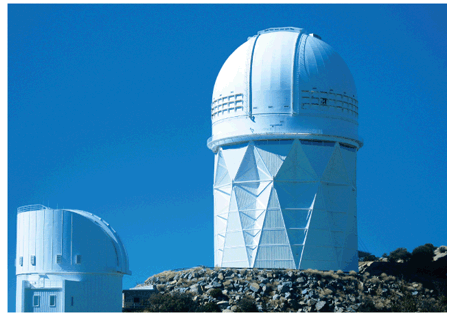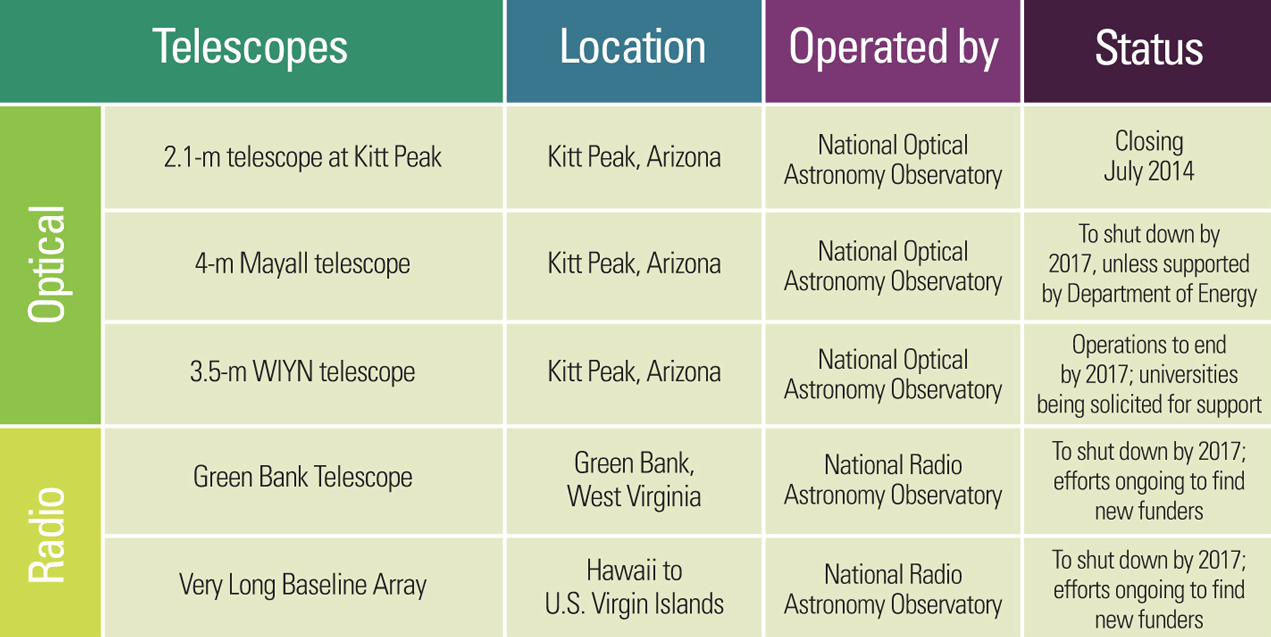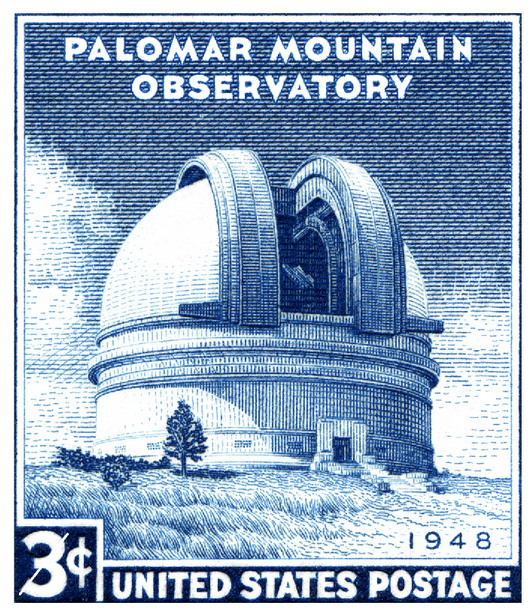To Have and/or To Have Not
 "They don't give a flying fuck about the rest of us. They'd just as soon take it all." Such was the explosion of words - part angry, part resigned - I heard. But the speaker wasn't some anti-Wall Streeter in an Occupy camp. No, the words came instead from a senior astronomer at a major Midwest research university. The time was 1999 and the context was a series of interviews I was doing as research for what became my book Giant Telescopes. ((If you want a short intro to the topic and some more discussion, see this 2000 paper.))Some translation is in order: "Us" is the community of astronomers who rely on the national system of publicly funded and accessible telescopes to do their research. "They" refers to those researchers with access to privately funded telescopes whose access is much more tightly guarded.The topic stirs strong emotions. All scientists need resources – equipment, funding, time – to carry out their research. For astronomers, two of the most important assets are access to telescopes and sufficient time allocated on them to make observations and collect data. The community makes a fundamental and long-standing distinction between those who have access to telescopes through their institutional affiliation and those who do not and must instead compete for time at one of the federally-funded national centers. A former observatory director explained the situation as, “There are the independent observatories which some people call the ‘haves.’ And there are the ‘have nots!’…The people who are the ‘have nots’ still have to rely on the National Observatory to get time."Optical astronomy - the subfield of astronomy I know best - has a long tradition of private and philanthropic support. This history stretches back to the 19th century and the continued generosity of deep-pocketed donors for astronomy separates it from most other sciences in the United States. Historically, private institutions or state-supported universities have funded and managed most large American telescope facilities. The largest and best telescopes have been available to only to a small fraction of the entire astronomical community. (A disclaimer: I work at the University of California and recently spent a year as a visiting professor at Caltech. UC and Caltech astronomers have access to the two privately-owned 10-meter telescopes in Hawai'i which were built in the 1980s with funds from the W.M. Keck Foundation.)The consequences of this history were made clear in a recent Science article. Over the next three years, five publicly-accessible telescopes are slated to be closed. The root cause is a funding crunch at the National Science Foundation. Closing the five telescopes could save about $20 million annually at a time when the agency is also trying to build two new telescope facilities.
"They don't give a flying fuck about the rest of us. They'd just as soon take it all." Such was the explosion of words - part angry, part resigned - I heard. But the speaker wasn't some anti-Wall Streeter in an Occupy camp. No, the words came instead from a senior astronomer at a major Midwest research university. The time was 1999 and the context was a series of interviews I was doing as research for what became my book Giant Telescopes. ((If you want a short intro to the topic and some more discussion, see this 2000 paper.))Some translation is in order: "Us" is the community of astronomers who rely on the national system of publicly funded and accessible telescopes to do their research. "They" refers to those researchers with access to privately funded telescopes whose access is much more tightly guarded.The topic stirs strong emotions. All scientists need resources – equipment, funding, time – to carry out their research. For astronomers, two of the most important assets are access to telescopes and sufficient time allocated on them to make observations and collect data. The community makes a fundamental and long-standing distinction between those who have access to telescopes through their institutional affiliation and those who do not and must instead compete for time at one of the federally-funded national centers. A former observatory director explained the situation as, “There are the independent observatories which some people call the ‘haves.’ And there are the ‘have nots!’…The people who are the ‘have nots’ still have to rely on the National Observatory to get time."Optical astronomy - the subfield of astronomy I know best - has a long tradition of private and philanthropic support. This history stretches back to the 19th century and the continued generosity of deep-pocketed donors for astronomy separates it from most other sciences in the United States. Historically, private institutions or state-supported universities have funded and managed most large American telescope facilities. The largest and best telescopes have been available to only to a small fraction of the entire astronomical community. (A disclaimer: I work at the University of California and recently spent a year as a visiting professor at Caltech. UC and Caltech astronomers have access to the two privately-owned 10-meter telescopes in Hawai'i which were built in the 1980s with funds from the W.M. Keck Foundation.)The consequences of this history were made clear in a recent Science article. Over the next three years, five publicly-accessible telescopes are slated to be closed. The root cause is a funding crunch at the National Science Foundation. Closing the five telescopes could save about $20 million annually at a time when the agency is also trying to build two new telescope facilities. If the proposed shut-downs occurred, there would be no publicly-accessible telescopes available to optical astronomers in the continental U.S.. The Gemini North telescope, a publicly funded 8-meter facility on Mauna Kea, would still be open as would its southern twin in Chile. But jetting off to Chile is a lot harder and more expensive than traveling to Kitt Peak in southern Arizona. ((A follow-up note: Point taken…yes, Gemini N/S is primarily queue based but it can also be used in observer mode still, yes? In any case, I think my general point about not having access to telescopes in the CONUS and having instead to fly to Chile or Hawai’i makes sense. One might also make the case that smaller telescopes – the kinds that KPNO operates – are ideal for training students. I know a lot of this can be done remotely but I wonder if this is a substitute for actually being on-site. Moreover, in the NSF's plan, only one major radio telescope in the U.S. - the Very Large Array in New Mexico - would be left.Once again, astronomers are referring to the have vs. have-not dynamic that defines their community. Science quoted, for example, Angela Speck, an astronomer at the University of Missouri which doesn't have access to its own telescope facilities, as noting that "more than half" of the optical.infrared observing community is the same boat as her. Without access to publicly-available telescopes, recruiting and training graduate students and postdocs becomes problematic. As another scientist noted, the proposed shutdowns could signal the "loss of a generation of astronomers."This isn't the first time that the nationally-operated system of telescope has come under threat. As I detailed in my book, the astronomy community in the 1980s and 1990s was regularly rocked by fears that it would lose access to its research instruments. Again, there is no single root cause. Budgetary woes at the NSF are compounded by ambitious plans to build a new generation of cutting edge telescope facilities. For instance, The NSF is currently funding construction of the Advanced Technology Solar Telescope (~$300 million), the ALMA array in Chile (an international project that prices out at around $1.5 billion), and the Large Synoptic Survey Telescope (~$665 million). So, it's not as if the U.S. isn't investing into observational astronomy. But these mega-projects are crowding out the smaller 'scopes that a large fraction of the community uses. Is this a good thing? Is it inevitable?Compounding the problem is the fact that, once built, telescopes stay open for a long time. The venerable 200-inch telescope operated by Caltech on Palomar Mountain - another private facility - was dedicated in 1948 and is still used today to make observations (although light pollution has dimmed its usefulness), train students, and test new instruments such as the innovative ARCONS camera.
If the proposed shut-downs occurred, there would be no publicly-accessible telescopes available to optical astronomers in the continental U.S.. The Gemini North telescope, a publicly funded 8-meter facility on Mauna Kea, would still be open as would its southern twin in Chile. But jetting off to Chile is a lot harder and more expensive than traveling to Kitt Peak in southern Arizona. ((A follow-up note: Point taken…yes, Gemini N/S is primarily queue based but it can also be used in observer mode still, yes? In any case, I think my general point about not having access to telescopes in the CONUS and having instead to fly to Chile or Hawai’i makes sense. One might also make the case that smaller telescopes – the kinds that KPNO operates – are ideal for training students. I know a lot of this can be done remotely but I wonder if this is a substitute for actually being on-site. Moreover, in the NSF's plan, only one major radio telescope in the U.S. - the Very Large Array in New Mexico - would be left.Once again, astronomers are referring to the have vs. have-not dynamic that defines their community. Science quoted, for example, Angela Speck, an astronomer at the University of Missouri which doesn't have access to its own telescope facilities, as noting that "more than half" of the optical.infrared observing community is the same boat as her. Without access to publicly-available telescopes, recruiting and training graduate students and postdocs becomes problematic. As another scientist noted, the proposed shutdowns could signal the "loss of a generation of astronomers."This isn't the first time that the nationally-operated system of telescope has come under threat. As I detailed in my book, the astronomy community in the 1980s and 1990s was regularly rocked by fears that it would lose access to its research instruments. Again, there is no single root cause. Budgetary woes at the NSF are compounded by ambitious plans to build a new generation of cutting edge telescope facilities. For instance, The NSF is currently funding construction of the Advanced Technology Solar Telescope (~$300 million), the ALMA array in Chile (an international project that prices out at around $1.5 billion), and the Large Synoptic Survey Telescope (~$665 million). So, it's not as if the U.S. isn't investing into observational astronomy. But these mega-projects are crowding out the smaller 'scopes that a large fraction of the community uses. Is this a good thing? Is it inevitable?Compounding the problem is the fact that, once built, telescopes stay open for a long time. The venerable 200-inch telescope operated by Caltech on Palomar Mountain - another private facility - was dedicated in 1948 and is still used today to make observations (although light pollution has dimmed its usefulness), train students, and test new instruments such as the innovative ARCONS camera. At the same time, annual operations costs needed to keep an observatory going are generally assumed to be about 5-10% of construction costs...so, something like the LSST may cost something like $50 million each year to keep surveying the sky.The problem of old 'scopes being sacrificed to pay for new ones isn't confined just to the publicly-funded system though. Science also reported that the Lick Observatory - a 125 year old facility operated by the University of California on Mt. Hamilton east of San Jose - also faced the threat of closure. The expected savings from not operating Lick would be plowed back into funding the Keck Observatory as well as UC's portion of its next mega-project, a 30-meter optical telescope underway in conjunction with Caltech (as well as organizations in Canada, China, India, and Japan). Expected price tag of the TMT? Over $1 billion.A few years ago, I co-authored a paper about ways in which NASA was making plans to build the successor to the Hubble Space Telescope. What was remarkable was that that the long lead time necessary to secure the political and financial support meant that the plans for a new space-based instrument had to be made while the existing one was still chugging along. Similar dynamics are very much at work in ground-based astronomy today, regardless of whether one is a have or a have-not.
At the same time, annual operations costs needed to keep an observatory going are generally assumed to be about 5-10% of construction costs...so, something like the LSST may cost something like $50 million each year to keep surveying the sky.The problem of old 'scopes being sacrificed to pay for new ones isn't confined just to the publicly-funded system though. Science also reported that the Lick Observatory - a 125 year old facility operated by the University of California on Mt. Hamilton east of San Jose - also faced the threat of closure. The expected savings from not operating Lick would be plowed back into funding the Keck Observatory as well as UC's portion of its next mega-project, a 30-meter optical telescope underway in conjunction with Caltech (as well as organizations in Canada, China, India, and Japan). Expected price tag of the TMT? Over $1 billion.A few years ago, I co-authored a paper about ways in which NASA was making plans to build the successor to the Hubble Space Telescope. What was remarkable was that that the long lead time necessary to secure the political and financial support meant that the plans for a new space-based instrument had to be made while the existing one was still chugging along. Similar dynamics are very much at work in ground-based astronomy today, regardless of whether one is a have or a have-not.